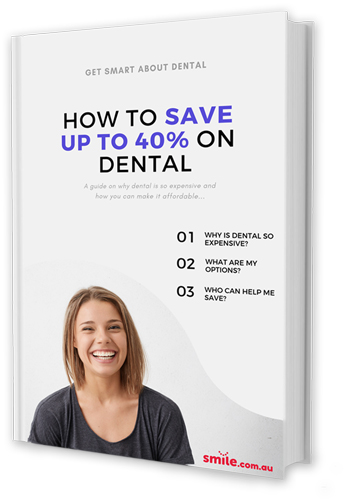Anaesthesia & Visiting a Dentist
Reviewed Nov 2023 by Our Content Experts
Some people feel anxious or nervous about their dental visits. But you can rest easy. smile.com.au general and cosmetic dentists want to make sure that your visit is as free from discomfort and anxiety as possible. Let's look at the options that are available.
A Numbing Effect: The Role of Local Anaesthetics
Local anaesthesia numbs the teeth and gums to prevent you from feeling discomfort during dental treatment. There are two types of local anaesthetics: topical and injectable.
- A topical anaesthetic helps numb the surface of the gums. It may be used to help eliminate the prick or slight sting that some patients feel from the injection. The topical anaesthetic is applied with a swab, spray or adhesive patch.
- Injectable anaesthetics work to prevent pain in the area of the mouth where treatment will take place. They generally are injected near the treatment site or elsewhere in the mouth to help block nerve endings and temporarily numb mouth tissues. Injectable anaesthetics are used for procedures such as restoring teeth, treating root canal problems or gum disease, preparing teeth for crowns and extracting teeth.
Anxiety and Pain Relief Through Conscious Sedation
Antianxiety agents or sedatives can help you relax during dental procedures. They may be given before or during the dental visit and can be administered as pills, liquids or injections. Some can be inhaled.
Antianxiety agents or sedatives may be used with local anaesthetics and pain medications during procedures such as placement of a crown. Some of these agents provide what is called 'conscious sedation' which means that when they are administered to you, you should feel drowsy but awake and responsive. Two forms of conscious sedation are nitrous oxide administration and intravenous sedation.
- Nitrous oxide, commonly called laughing gas, is used on patients of all ages and few side effects are associated with its use. Nitrous oxide is mixed with oxygen and inhaled through a small mask. Its effects wear off soon after the mask is removed.
- Intravenous sedation involves the introduction of medication intravenously, usually in a vein in the arm, to achieve a relaxed, sedated state in which you are less aware of what is taking place. You are awake, breathing and swallowing on your own.
General Anaesthesia
General anaesthesia, unlike conscious sedation, causes a loss of consciousness and produces deep sleep.
General anaesthesia may be used for patients with uncontrollable anxiety or patients who are unable to control their movements (such as young children or some people with disabilities). It also may be used for long or complicated procedures such as surgical tooth extractions.
Doing Your Part: The Role of the Dental Patient
As a patient, your role is to discuss treatment options.
- Be sure to tell your smile.com.au dentist about any existing medical conditions or changes in your health history since your last visit.
- Tell your smile.com.au dentist about any drugs you are taking (prescription or over-the-counter including alternative therapies such as herbs). Remember to mention any drug allergies or dependencies you have and any problems you've had with medications in the past.
- Discuss the risks and benefits of each anaesthetic option.
You and your smile.com.au dentist can work together to make you more comfortable even during complex dental procedures.

